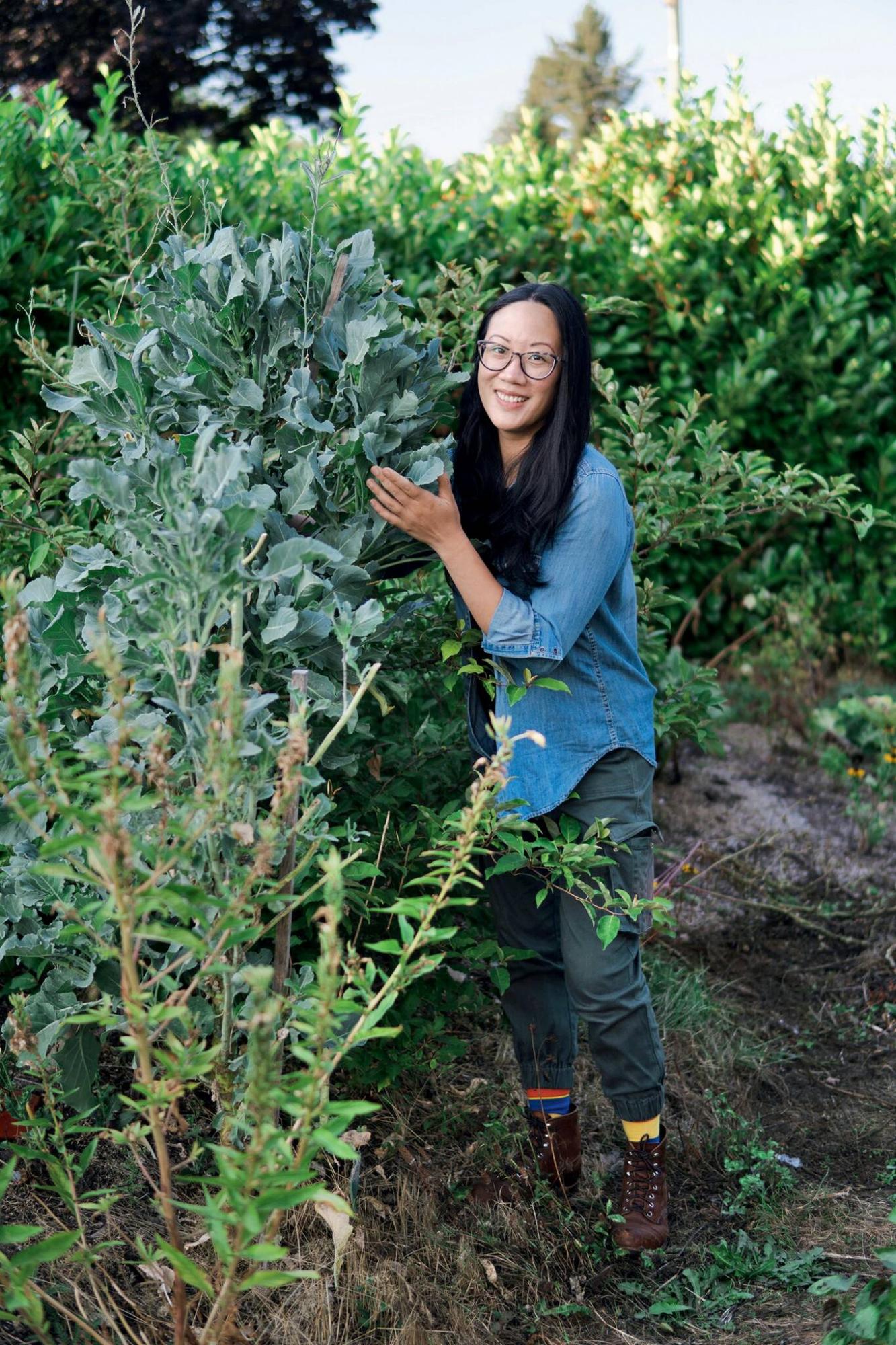
Christina Chung
Christina Chung in her layered edible garden which has fewer weeds and few insect and disease problems.
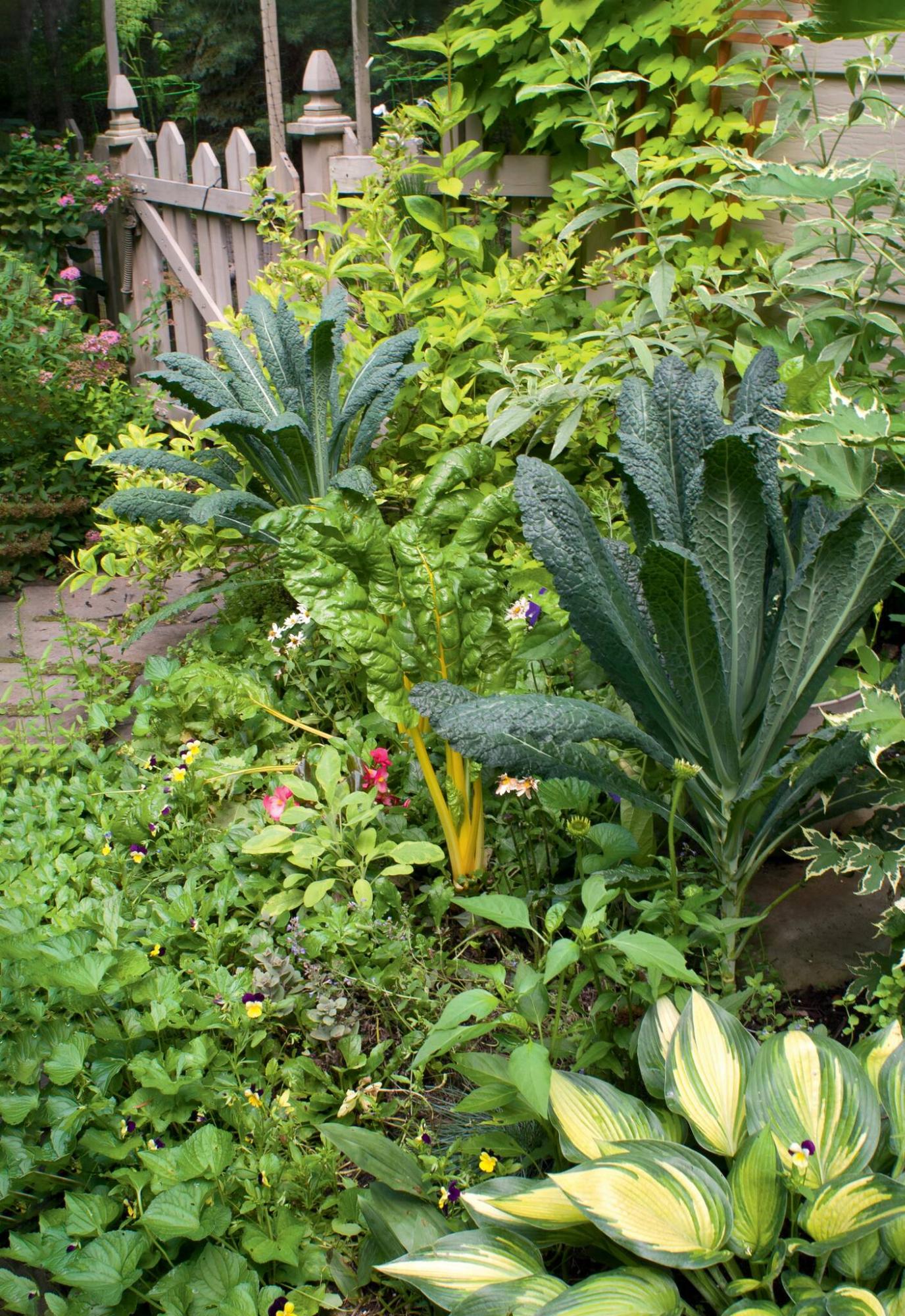
Judy White
This attractive layered garden has five layers including a climber, shrub, perennials, veggies, and a groundcover layer.
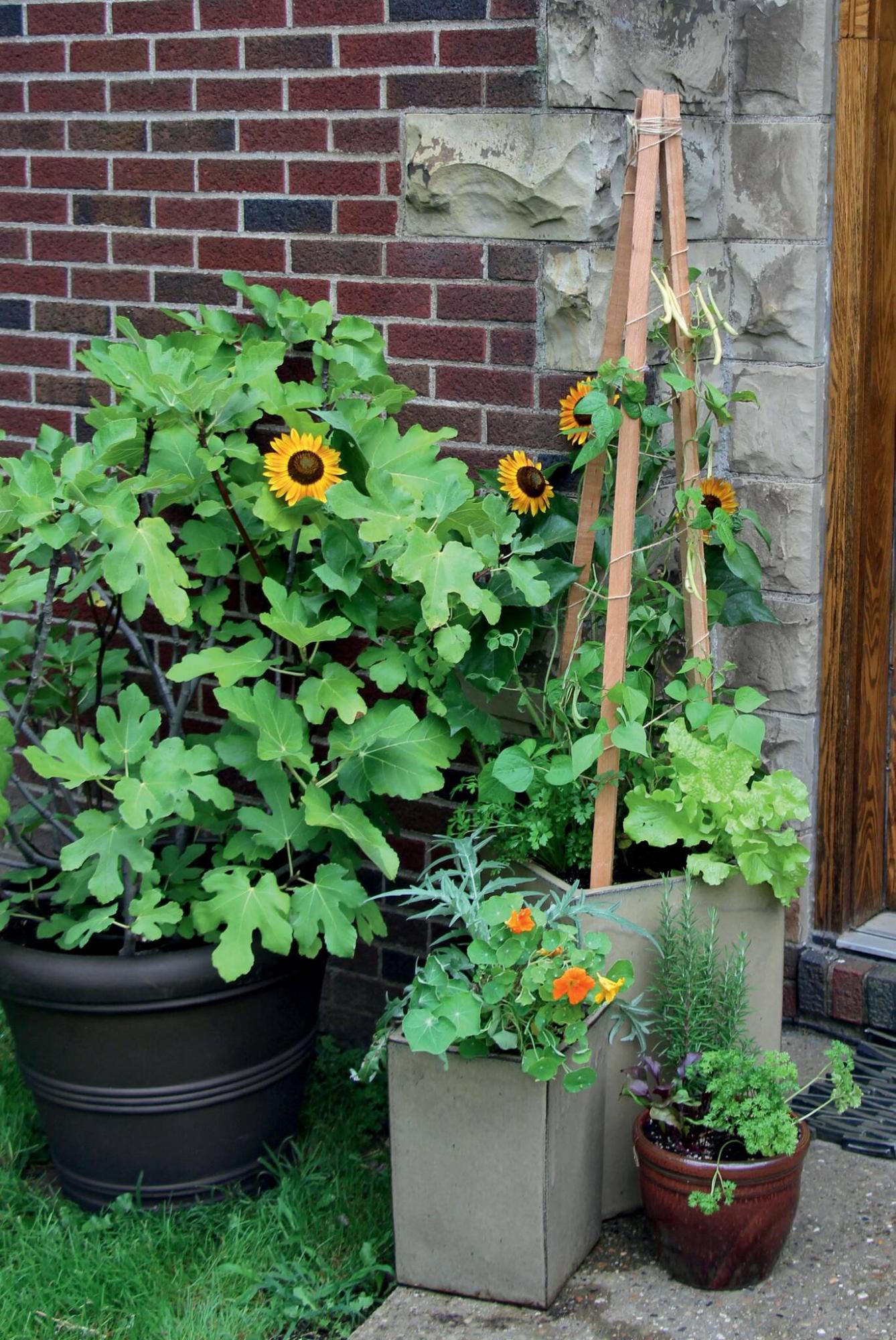
JLY Gardens
Layered gardens in containers are perfect for small spaces or when you want to experiment with exotic edibles.
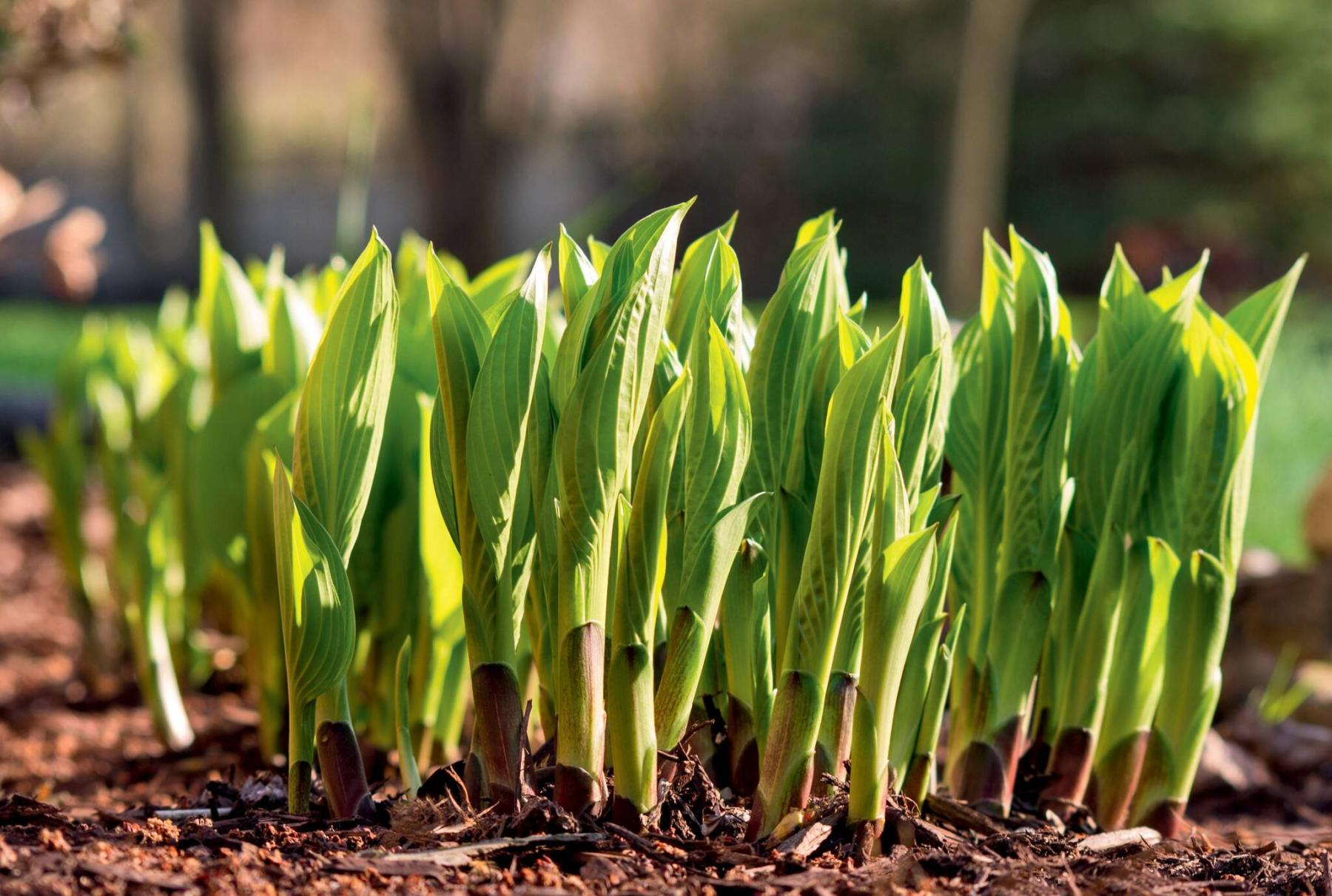
Shutterstock
Excite your palate! Hosta shoots are delicious sauteed or breaded and fried.
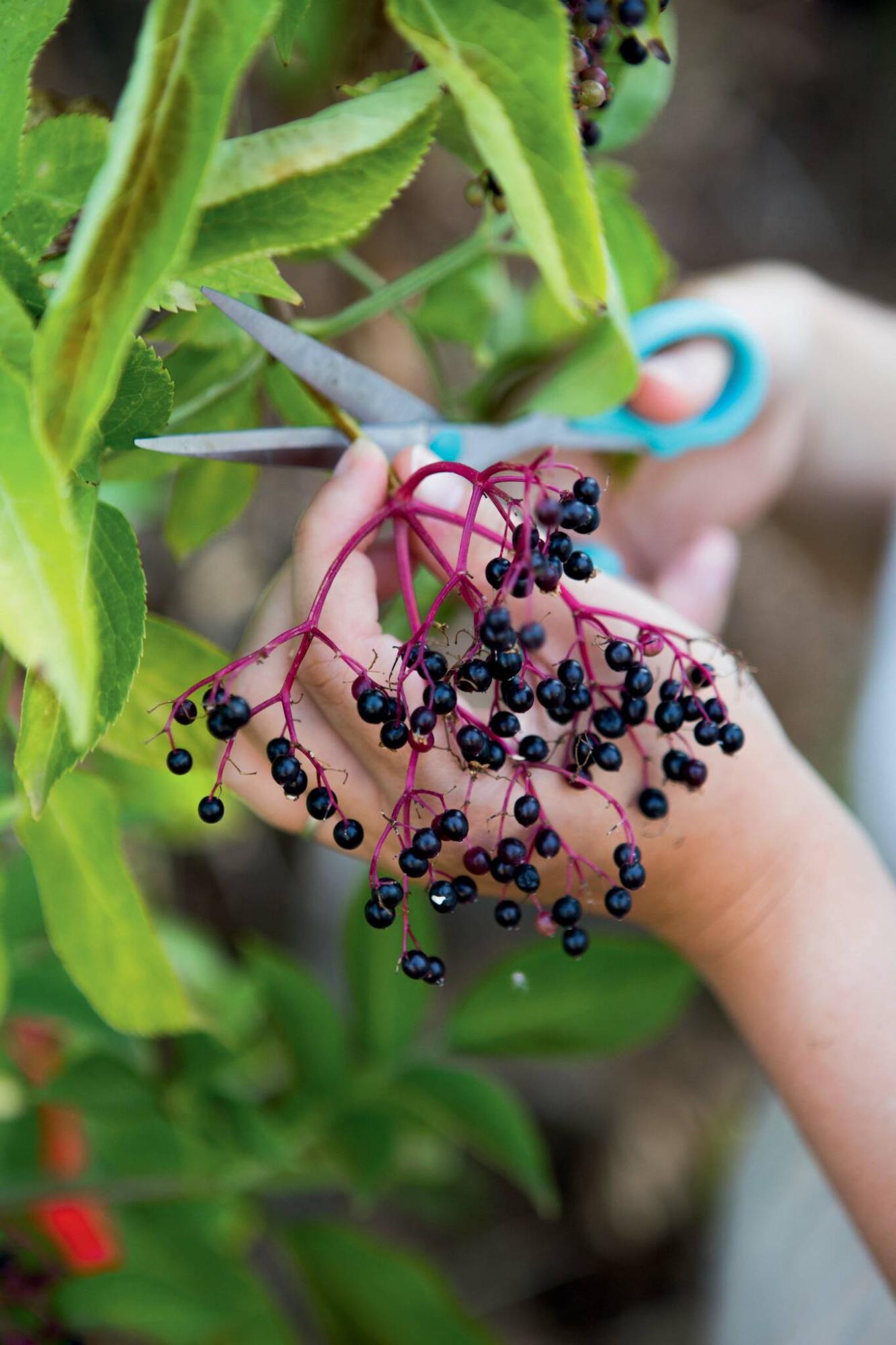
Shutterstock
Elderberry, with edible flowers and fruit, is a great addition to the hardworking shrub layer.
Gardening vertically downwards is the key to growing your own food with less work and fewer resources required, says Christina Chung. Starting with trees or climbing vines and working your way downwards fills in all the empty spaces and layers of your garden, she says, and maximizes growing potential.
“The layered garden method is so important for folks who have a smaller footprint to work with – even if growing food in containers is the only option,” says Chung, Vancouver-based author of The Layered Edible Garden – A Beginner’s Guide to Creating a Productive Food Garden Layer by Layer (Cool Springs Press, 2024).
Chung is a past coordinator of UBC Botanical Garden’s Horticulture Technician Foundation program where she designed and instructed urban food production courses. Through her consultancy, Fluent Garden, Chung, 40, encounters newer gardeners her own age and younger who are exploring or trying to figure out what style of garden or types of plants work best for their garden space. “A common concern,” says Chung, “is the need to grow food sometimes out of necessity.”
Despite a cooling inflation rate, food prices are expected to increase this year, according to Canada’s Food Price Report 2024. The possibility of drought conditions this year, says Chung, is another concern shared by many Canadians. “Plants are waking up and with the dryness and low soil moisture conditions that many of us are experiencing this spring, it’s a challenge to see how plants are going to perform and behave,” she says.
“There are a lot of resources available to newer gardeners who want to grow tomatoes and potatoes, but what other types of edible foods are out there?” In her own garden, Chung has broken away from growing a traditional vegetable garden in raised beds and neat rows. Now she incorporates layers of edible plants in every available space and has expanded her food palate by choosing a diverse range of plants that have edible fruit, flowers, leaves, stems, roots, or seeds. By filling every space with a diversity of edible plants, Chung’s garden has fewer weeds and fewer pest and disease problems.
Curiosity and a willingness to experiment with plants that are unique to you, says Chung, can help you create your own thoughtfully designed food forest with a combination of trees, sub-canopy trees, shrubs, climbers, herbaceous perennials, annuals, ground covers and edible roots. These are the eight layers of a layered edible garden. But you can also grow food in fewer layers, she says.
In one picturesque example in her book, Chung illustrates a layered edible garden that utilizes five layers of plants – a hops vine (Humulus lupulus) as the climber layer; roses for the shrub layer; hostas and sage as the perennial layer; kale, chard, and violas as the annual layer; and violets (Viola odorata) on the ground cover layer.
Wait, hostas? “All species and hybrids of hostas are edible,” says Chung. Hosta leaves can be eaten sautéed, boiled, roasted, or breaded in tempura batter and fried. The best time to harvest hosta leaves is when the young, tender shoots start poking out of the ground. Chung recommends harvesting only a few shoots at a time so as to not weaken the plant. Solomon’s Seal is another common shade perennial that has edible possibilities. The young shoots can be cooked and enjoyed in the same way as asparagus.
To establish your layered food garden, says Chung, start by looking at your existing plants and consider the multiple ecological functions they serve. “If your existing plants work for you and especially if they are native to your area, then respect that and incorporate them into your plan. A large existing tree can be your specimen piece that you build your garden around and then work your way down through the smaller layers.”
The shrub layer is one of the most versatile and hard-working layers in the edible garden, says Chung. There are so many types of edible shrubs to choose from. Haskap is one of her favourite fruiting shrubs. “It is such an underrated shrub. Haskap blooms so beautifully with those light sulfur yellow flowers. But it does need another pollinator buddy in order to get proper yields to make it worthy of the amount of space it needs.” More unusual choices suitable for our cold climate include sea buckthorn, goji berry, and elderberry shrubs. The fragrant white flowers of elderberry can be used to make a simple syrup. The dark berries are delicious in pies and preserves.
Fruit trees and fruit shrubs planted in the sub-canopy layer will eventually grow to their full size and create shade. “Think about how much light your fruit plant needs to produce fruit as well as the amount of shade taller plants will cast on other plants in the understory,” says Chung.
Shade is not necessarily a limiting factor. “If you are open to exploring, there are so many plants that can do well with part shade. Sometimes you just have to give it a try, especially with plants grown from seed because seed-grown plants are a much smaller investment.” Red-veined sorrel, for example, is a delicious, shade-tolerant, Zone 4 edible perennial that can easily be grown from seed.
Virginia bluebells (Mertensia virginica) is another shade-tolerant option for the perennial understory. The stems, leaves, and flowers are edible and can be harvested when they are 4 to 8 inches (19 to 29 cm) tall. Chung says that bluebells are delicious steamed or sautéed.
“Groundcovers are quite overlooked,” says Chung. “I grow creeping thyme alongside native strawberries and this creates colour contrast and really neat texture.”
The climber layer offers several delicious options – scarlet runner beans, hops, kiwi, and grapes – while the annual layer is almost limitless, especially if you want to experiment with growing non-hardy fruits such as figs in containers. Chung recommends growing edibles in large vs small containers to allow adequate room for root systems to develop. Container-grown plants must also be fertilized regularly. To create layered gardens in containers, says Chung, choose a mix of plants in varied sizes including climbers and spillers. Arranging an eclectic collection of containers in an attractive grouping also gives the feel of a layered garden.
Beautifully illustrated, Chung’s book features dozens of plant varieties in each of the eight layers described in her book. She provides the light requirements, hardiness, size, flowering and fruiting times, and ecological benefits of each plant.
It can be exciting to reimagine your garden, but it can also be quite daunting trying to figure out where to start, says Chung. “Sometimes nature gives you a clue so start out by observing. As gardeners, it is so important that we learn how to observe and start recording things.” Keep a record of your existing plants and new plants that you want to add to your garden, as well as their characteristics and when they are ready to harvest, says Chung.
For advice, ideas and tips to keep your outdoor and indoor plants growing, sign up to receive Winnipeg Gardener, a free monthly digital newsletter I write for the Winnipeg Free Press at https://www.winnipegfreepress.com/newsletter/winnipeg-gardener



